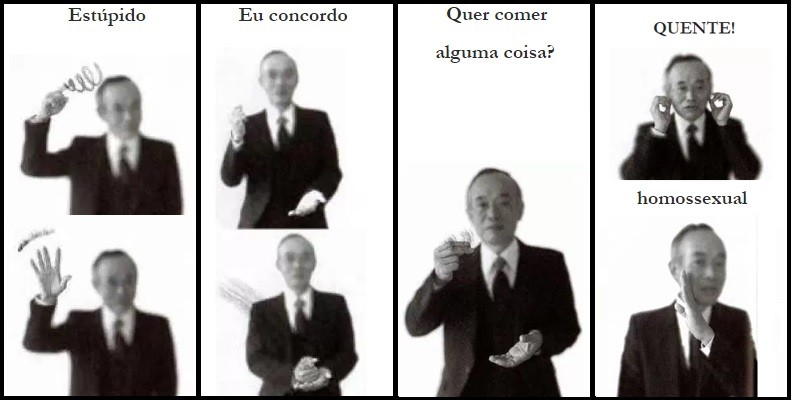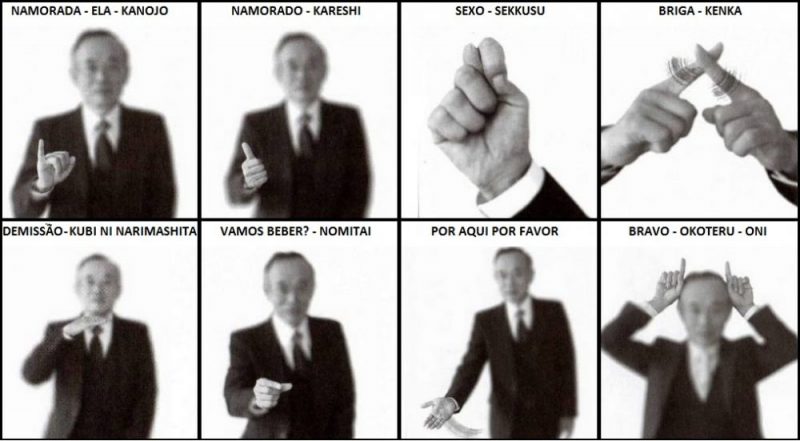In today's article we are going to talk about Japan's body gestures that are done with the hand or otherwise that have meaning and serve for communication.
Gestures in Japan can be quite different from the gestures used in Brazil. It's important to learn so that you don't mistake a gesture as an insult or something obscene.
Gestures can also help you communicate if you have language difficulties. In this article, we will introduce most of the gestures and their meanings.
It's hard to write an article about gestures. It's better to see it in practice with the video of our friend Santana below:
Hope you enjoyed the video, but it's not over yet. We have many other gestures below:
hand gestures
Can't - dame - Crossing your arms means something negative, forbidden, something you cannot.
No - iie - Waving your right hand in front of your face can mean not or something negative. Similar to the gesture used to say something is stinking.
I - watashi - The Japanese often put their finger on their nose to refer to themselves. Nowadays it has become common to aim for the chest as in the West.
You - anata - We use the palm facing up to point at a person.
Come here -kotchi ni oide- The Japanese use the traditional hand call, but to the underside.
Calm down! - ochi tsuite - With both palms down, wave your hands up and down to calm someone down.
Money - okane - Make a circle using your index finger and thumb. In Brazil this is offensive.
Wait - chotto matte - As if it were a pair! Using your palms facing forward you are telling the person to wait a bit.
Okay - daijobu desu - Just like the money gesture, only with the palm facing forward.
In addition, there are several other gestures such as putting the little finger together to make a promise, kneeling to apologize, joining hands to say itadakimasu, in addition to the famous bow.
We wrote an article talking about the occasions to bow, we recommend reading the article clicking here. Hope you enjoyed this article! The images were taken from the book “70 Japanese Gestures” we recommend taking a look.






